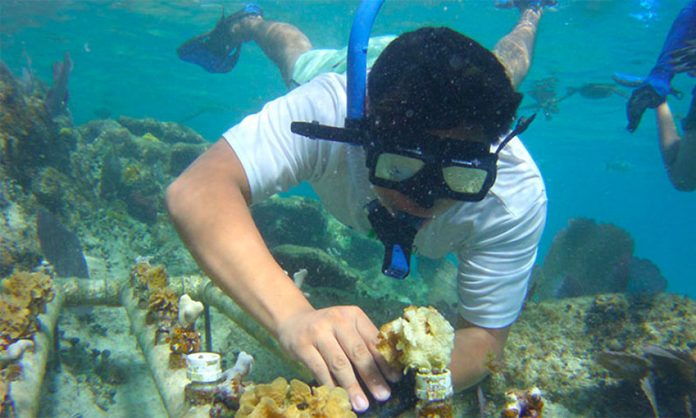Three thousand colonies of lab-grown coral were planted in the Garrafón reef near Cancún, Quintana Roo, on Thursday.
The replenishment of the reef is part of a 12-million-peso environmental strategy of the Quintana Roo government, which is aiming to plant 265,000 coral colonies in reefs off the state’s coast by 2022.
More than 30 divers and a similar number of snorkelers completed Thursday’s mission, planting 11 different species of coral that was grown in the laboratories of the National Institute of Fishing, the National Protected Areas Commission and the National Autonomous University.
The Quintana Roo Environment Secretariat (SEMA) said in a statement that the Garrafón reef, located within the Isla Mujeres-Punta Cancún-Punta Nizuc Western Coast National Park, was specifically chosen for replenishment due to the devastation it suffered when Hurricane Wilma passed through the Caribbean Sea in 2005.
The reef restoration project began in 2017 after Governor Carlos Joaquín González pledged to plant the same quantity of coral as votes he attracted in the 2016 election.

SEMA said that 27,676 corals have so far been planted at 12 different locations within four different reefs located off the coast of Isla Contoy, Isla Mujeres, Puerto Morelos, Playa del Carmen and Akumal.
Most of the coral has been grown through micro-fragmentation, a technique in which coral is broken into smaller pieces using a specialized saw.
That “stimulates the coral tissue to grow, allowing them to grow into clones at 25 to 50 times the normal growth rate,” according to an article about the technique published on the website Medium.
“Clone fragments recognize each other so instead of fighting each other for resources fuse together to form larger colonies. After four to 12 months the fully-grown corals are ready to be planted back into the ocean or fragmented to restart the process,” the article said.
SEMA said the lab-grown coral is monitored after it is introduced into the ocean, adding that results show that there is a 95% survival rate.
Large amounts of coral are dying off in reefs off the coast of Quintana Roo due to a bleaching phenomenon caused by overly warm water, while the arrival of large quantities of sargassum also affects reef health.
In addition, scientists warned this week that coral spawning has been declining since 2018.
Source: Reforma (sp), Yucatán a la Mano (sp)
